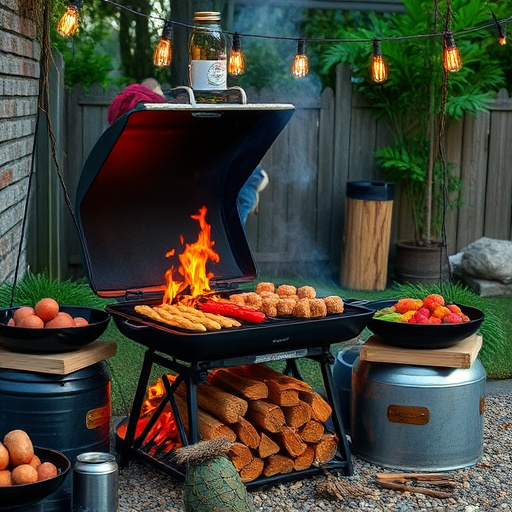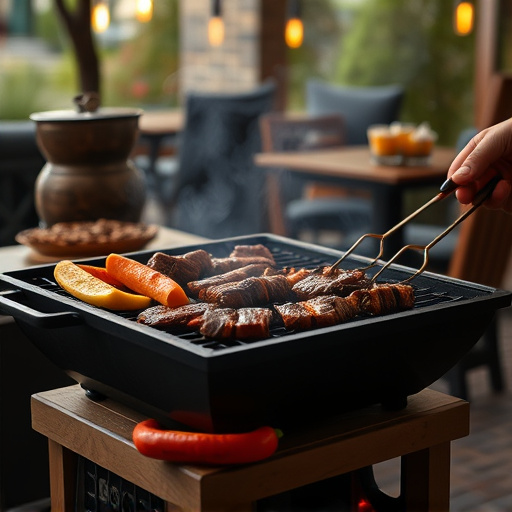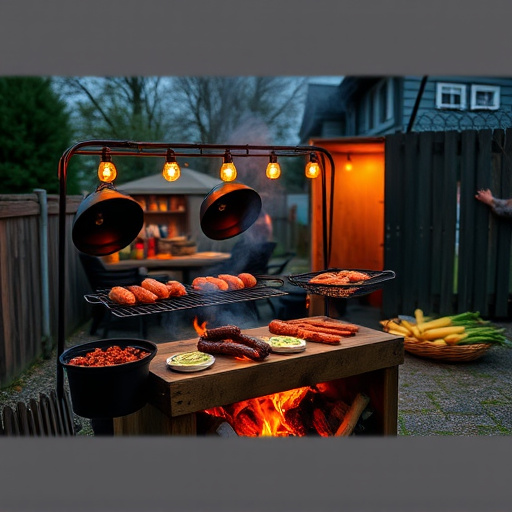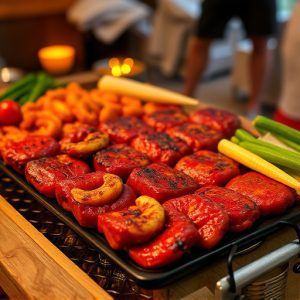Selecting the perfect cut of BBQ beef ribs (St. Louis or baby back) is key for a great recipe. Look for balanced meat-to-bone ratios, optimal fat marbling, and meaty bones. Start with high-quality ribs from reputable sources, then use a dry rub and consider marination for enhanced flavors and tenderness.
“Unleash the ultimate BBQ delight with our guide to crafting the perfect beef rib recipe. From choosing the right cut – St. Louis or baby back – to mastering dry rub combinations and slow-cooking techniques, we’ll show you how to achieve tender, mouthwatering ribs every time. Learn the art of seasoning, smoking, and garnishing to create a BBQ experience that will have everyone craving more. Discover the secrets to an unforgettable BBQ Beef Rib Recipe.”
- Choosing the Right Ribs
- – Types of beef ribs: St. Louis cut vs. baby back ribs
- – Selecting the best quality ribs for maximum flavor
- Marinating and Seasoning Techniques
Choosing the Right Ribs

When it comes to crafting the perfect BBQ beef ribs, selecting the right cut is half the battle won. Look for ribs with a good balance of meat and bone, ensuring each rib has a substantial piece of meaty flesh attached. Opting for ribs with a bit of marbling will add flavor and keep them moist during the slow-cooking process. The most common cuts are baby back or spare ribs; both work well in BBQ recipes, offering a delicious blend of tender meat and crispy edges when cooked to perfection.
Choosing the right ribs is key to achieving that mouthwatering, fall-off-the-bone texture in your BBQ beef rib recipe. Fresh, high-quality ribs will make all the difference, so seek out a good butcher or market for the best options. Properly selecting and preparing these culinary treasures sets the stage for an unforgettable BBQ experience that will have your taste buds dancing with joy.
– Types of beef ribs: St. Louis cut vs. baby back ribs

When it comes to BBQ beef ribs, two main cuts dominate the scene: St. Louis cut and baby back ribs. St. Louis cut, also known as “full ribs,” are meaty with a good amount of bone and fat marbling. They’re named after their distinctive shape, where the ribcage has been separated from the spine, leaving a long, meaty bone with ample flesh attached. This makes them perfect for slow-smoking, as the bones act as natural handles during the cooking process.
In contrast, baby back ribs are leaner and smaller, cut from the shorter end of the rack. They tend to have less fat marbling but offer a more delicate flavor. Their size makes them easier to manage during grilling or smoking, and they’re often preferred for those who prefer a lighter, sweeter BBQ beef rib recipe. Both cuts have their merits, so the choice depends on personal preference and the desired texture and taste of your final dish.
– Selecting the best quality ribs for maximum flavor

When it comes to crafting lip-smacking BBQ beef ribs, the first step lies in choosing the right cut. Opt for ribs with a good marbling of fat—this ensures a tender, juicy end product. Look for meaty, well-structured bones and a thin layer of meat covering them. The quality of your ribs significantly impacts the final flavor, so source them from reputable butchers or select premium store-bought options.
For an exceptional BBQ beef rib recipe, consider choosing a combination of spare rib and baby back cuts. Their unique blend of tenderness and rich flavor makes them a favorite among rib enthusiasts. Properly selecting and preparing these ribs is key to satisfying everyone’s cravings at your next BBQ gathering.
Marinating and Seasoning Techniques

When it comes to a mouthwatering BBQ beef rib recipe, marinating and seasoning are key. Start by combining your favorite dry rub ingredients like salt, pepper, paprika, garlic powder, and onion powder. Rub this mixture generously over the ribs, ensuring every surface is coated. This initial step sets the stage for deep flavors that will permeate the meat.
For a more intense experience, consider marinating the ribs in a sauce made from yogurt or buttermilk mixed with your dry rub. This not only adds moisture but also tenderizes the beef, resulting in succulent, fall-off-the-bone ribs. Let them soak for several hours, or even overnight, before cooking to allow the flavors to penetrate fully.
